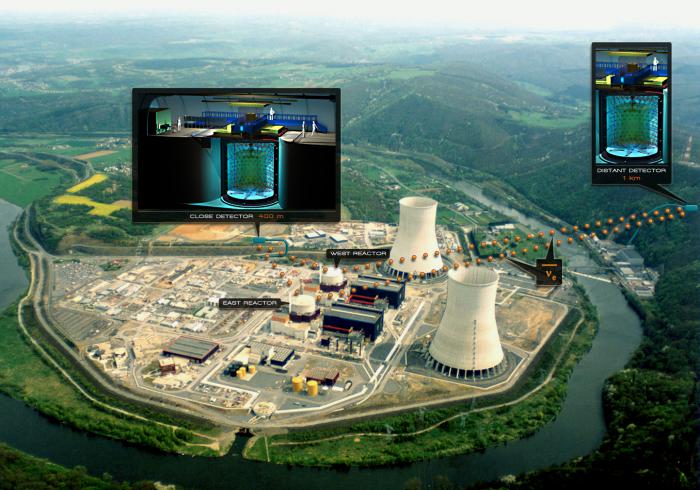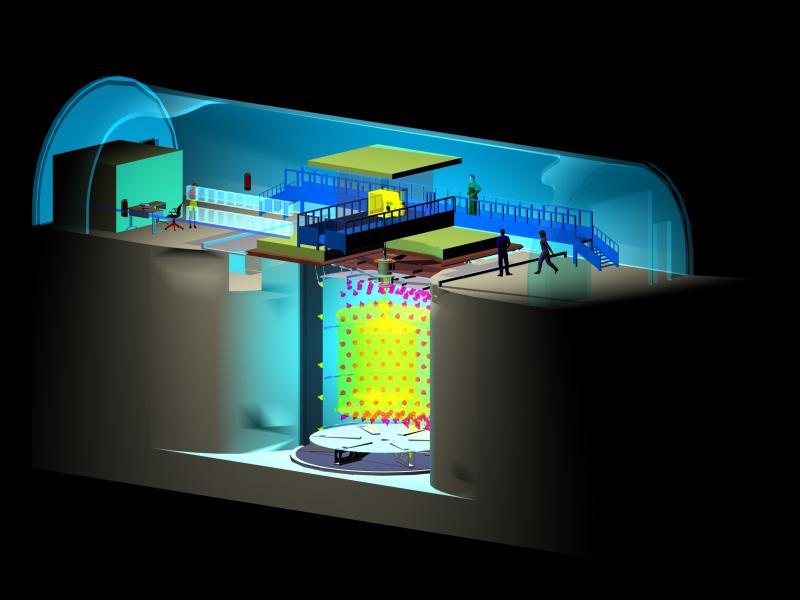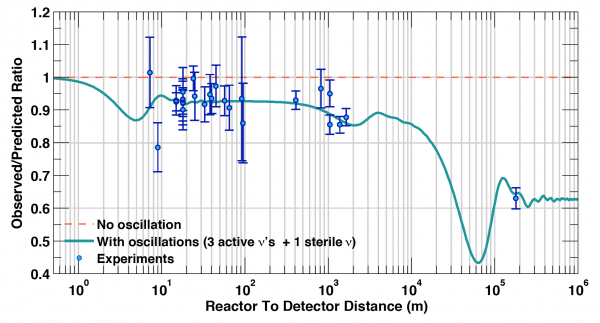Scientific goals :
Neutrinos are elementary particles produced abundantly in stars, in the Earth's atmosphere and in the cores of nuclear power plants. In 2006 CEA/IRFU and CNRS/IN2P3 have decided to officially launch the construction of the Double Chooz experiment. Two identical detectors are to be installed near the Chooz nuclear power plant, in the French Ardennes, at different distances from the reactors. This experiment will allow a precise measurement of the last unknown property of neutrinos: their oscillations.
Neutrinos are elementary particles that interact very weakly with matter: at most one in ten billion is stopped while going through our planet. They exist as three different types, and are able to change from one type to another through a peculiar quantum property, "oscillation". Three parameters enter the equations that govern the frequency of these oscillations. (The parameters are called "mixing angles", as they characterize the mixing proportions between the various neutrino types.) Two of them have already been measured. The earlier Chooz experiment, which was conducted at the same site between 1997 and 1999, was able to show that oscillations corresponding to the last, third parameter are infrequent: its value must thus be small. It is crucial however to measure it as, besides putting a finishing touch to the Standard Model of particle physics, its value is needed in the preparation of experiments that aim to understand the origin of the matter-antimatter asymmetry in the Universe. Five physics Nobel prizes have already rewarded discoveries about neutrinos.
Collaboration and IRFU involvment :
Localization and planning : Chooz nuclear power plant , in the French Ardennes
Link to the Non-proliferation Effort:
The fundamental knowledge on neutrinos acquired in the recent years open the possibility of applied neutrino physics. Among it the automatic and non intrusive monitoring of nuclear reactor by its antineutrino signal could be very valuable to IAEA in charge of the control of nuclear power plants. Several efforts worldwide have already started.
The Double Chooz collaboration is also in a good position to evaluate the interest of using antineutrino detection to remotely monitor nuclear power station. Indeed, without any extra experimental effort, the near detector of the Double Chooz experiment will provide the most important data set of well-measured antineutrino (a million of neutrino events). The precise energy spectrum recorded at a given time will be correlated to the fuel composition and to the thermal power provided by EDF; it is expected that individual component due to fissile element (235U, 239Pu) could be extracted with some modest precision and serve as a benchmark of this techniques.
To know more:
http://irfu.cea.fr/Phocea/Vie_des_labos/News/index.php?id_news=1794
http://irfu.cea.fr/Phocea/Vie_des_labos/News/index.php?id_news=1796
Web site :
Contact
• The ultimate constituents of matter › Neutrino Physics
• The Electronics, Detectors and Computing Division • The Nuclear Physics Division • The Particle Physics Division
• LEARN - Study and Applications of Nuclear Reactions • Sources and reactors neutrinos






